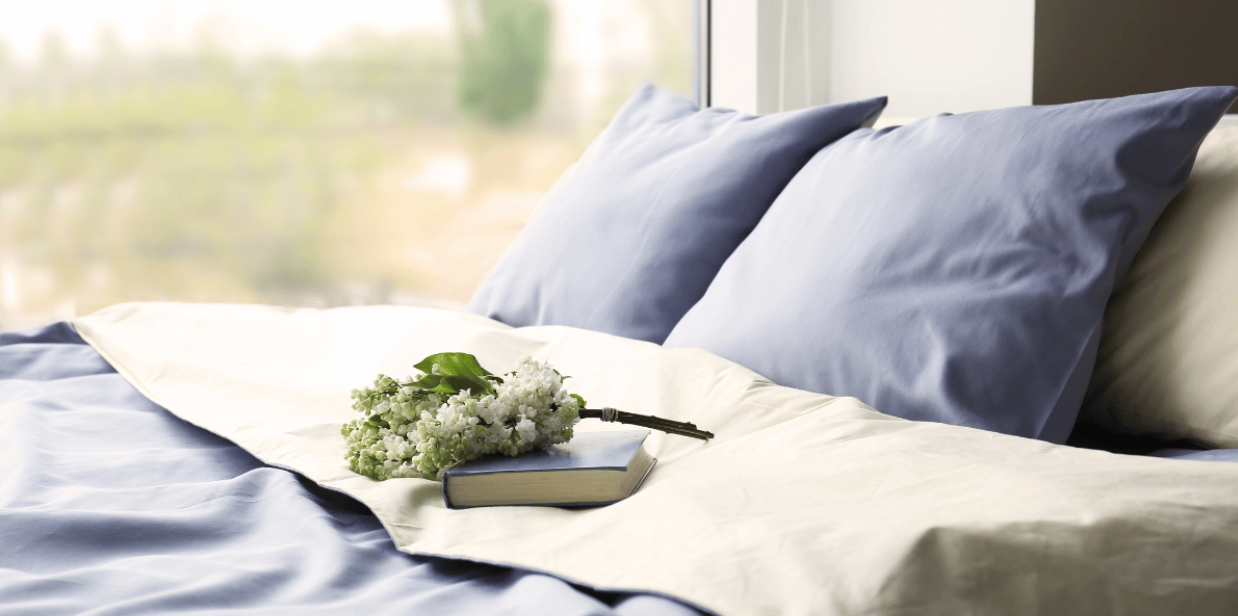
Guide to Choosing the Right Bedding for You
The right bedding is important when it comes to getting into bed at the end of the day. The type of bedding will also vary depending on the time of year and pairing it up with the right duvet and mattresses.
So how do you choose the right bedding for you? In this guide, you’ll learn what options are available when it comes to bedding materials and the benefits of specific fabrics and mattress combinations.
Don’t know where to start? Here are four steps to picking the right bedding for you:
- Pick the size appropriate for the bed.
- What type of material and finish do you want?
- Decide on the color scheme
- Find the right style - fastenings, pillowcases, etc.
The size of your bed
What size bed do you have? Depending on the size of your bed, the thickness of the duvet, and the size of the duvet, you’ll want to opt for the bedding that accommodates all three. For example, if you have a queen size bed, you might want to opt for a duvet that’s the next size up and that means getting bedding that is slightly larger than the duvet.
Opting up a size in each category is going to help provide ample coverage and comfort when sleeping in bed. The type of material will determine how comfortable your bed is too. If the duvet or mattress is quite thick, you might want to think about the thickness of the bedding material too.
Type of bedding materials to choose from
Talking of bedding materials, there are a lot to choose from. Here are some of the bedding material examples that you might want to consider.
Linen
Linen is perhaps one of the most popular bed sheet fabrics, especially for those warmer months. Like cotton, it’s a natural fiber that is incredibly airy and allows your body to breathe. Not only that but it helps to absorb any perspiration that occurs when lying in bed.
If you’re located in an environment that is hot and humid, then linen may be the right choice for you. Linen also becomes softer with each wash.
As a style, linen bedding is a great way to make your bedroom look effortlessly stylish and have that relaxed look.
Sateen
Sateen sheets are a great way to bring top-star, hotel luxury to your bedroom. Made from premium Egyptian cotton, it’s a great option for those who find themselves in often colder climates.
Egyptian cotton holds heat better and will keep you warm and toasty. Sateen sheets don’t require much in the way of care, so you can chuck it in the wash on your standard settings. Another feature of this type of material is that it’s easy enough to style with very little.
Brushed cotton
Brushed cotton sheets are made from 100% cotton, making them incredibly soft. For those who are looking for the ultimate in cozy bedding, brushed cotton or any cotton is going to be a surefire win.
With brushed cotton, you’ve got the benefit of retaining heat better than most. Breathable and airy, they’re a great option for those who are looking for an all-year-round option whether or not you’d consider yourself a hot or cold sleeper.
Percale
For soft and breathable materials, Percale is a preferred choice. Luxuriously soft, it’s one that ticks all the boxes when picking the ultimate bedding for your needs. It’s also known as Egyptian cotton because it’s a material that grows along the Nile River in Egypt. With natural qualities, it’s one that you’ll be hard-pressed to find better.
With percale bed sheets, it benefits those who tend to get hot at night. It keeps the body cool and the fabric itself is exceptionally lightweight.
Bamboo
Bamboo is an environmentally friendly material, making it a great pick for those who are eco-conscious. It is also a softer material than most and is known to be wrinkle-resistant, which is good for those who don’t like getting out the iron or steamer.
As well as having some great qualities, bamboo sheets are highly durable, breathable, and most importantly hypoallergenic. For those who suffer from allergies, bamboo type of material might be worth opting for.
Polyester
Polyester is often quite rough when it comes to the material. However, if you’re able to find some polyester blends, you’ll find that it’s much softer and there’s a higher level of comfort as a result.
With this material, it’s easy enough to wash and is wrinkle-resistant. Not only that but it’s much more affordable too. For those who don’t want to iron or do anything with the maintenance of their bedding, then this is a great choice.
It’s also water-resistant, which is a good choice for those who have kids and want a spill-friendly option. However, stains can show up easily on polyester, so this is worth being aware of.
Silk
Silk is a natural material that’s produced by silkworms. As such, it needs a delicate hand when it comes to the production of it in any products, including bed sheets. You will also find that the material is a lot more expensive than other options.
With silk, it’s naturally hypoallergenic - another bonus for those with allergies, but it’s important to be aware of the maintenance that comes with silk. You’ll find that these materials are perfect for adding some luxury to the space. While it’s expensive, it’s certainly worth the investment if it ticks off the boxes for you.
What about thread count?
For the best bedding fabric, it’s worth knowing your thread count. A thread count of 400 is considered the gold standard in the bedding material world.
Anything above the ideal 400 thread count will often mean that the manufacturer uses thinner threads or threads that have been twisted together. It doesn’t necessarily mean you get better quality if it’s over 400, which is a common misconception.
It’s worthwhile to feel the bedding you’re shopping for, especially when it claims to have a big thread count or on the flipside, a low thread count.
For the best bed sheets, it’s good to know what bedding materials work for you and which ones then fit the type of mattress you own. Take this guidance and maximize your comfort and overall quality of sleep
